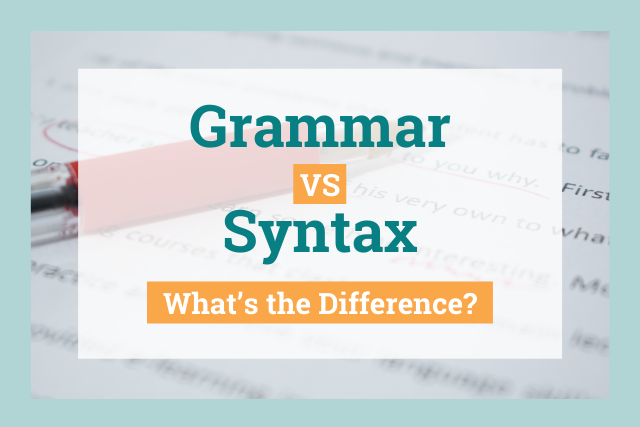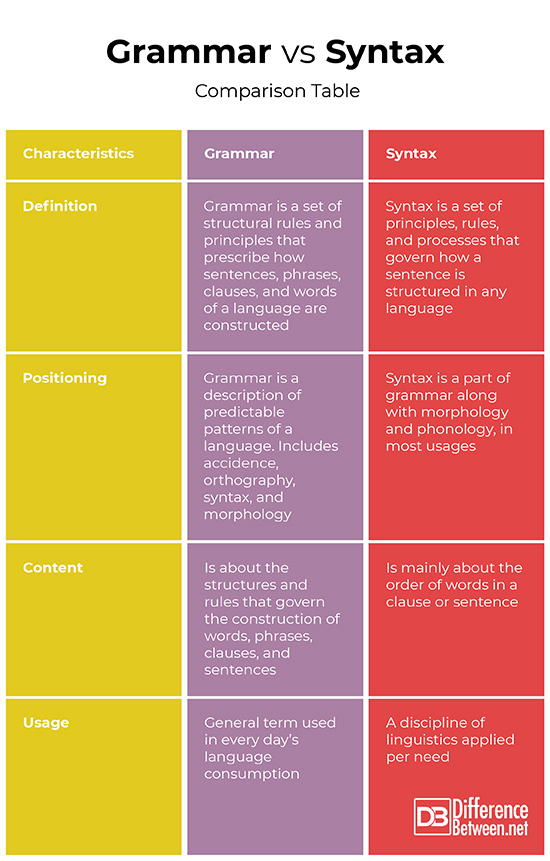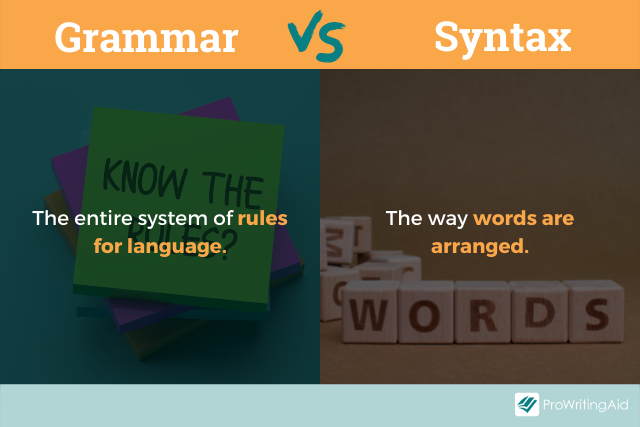Have you ever wondered if grammar and syntax mean the same thing? You might think they’re just two words for the same concept, but understanding the difference can change the way you write and communicate.
Knowing how grammar and syntax work together can make your sentences clearer and more powerful. Keep reading, and you’ll discover simple tips to improve your writing instantly—making your words work harder for you. Don’t miss out on learning this key skill that can boost your confidence every time you put pen to paper or fingers to keyboard.
Grammar Basics
Understanding grammar is key to learning any language. Grammar gives us the rules to form correct sentences. It helps us share clear ideas and be understood by others. Grammar is more than just memorizing rules. It is the foundation of how language works.
Many people confuse grammar with syntax. They are related but not the same. To clear the doubt, let’s explore the basics of grammar.
Components Of Grammar
Grammar has several parts. The main components include parts of speech, sentence structure, and punctuation. Parts of speech are nouns, verbs, adjectives, and more. These show the role of each word in a sentence. Sentence structure means how words combine to form sentences. Punctuation helps separate ideas and clarify meaning. Each part plays a role in making language clear and correct.
Role In Language Structure
Grammar controls how we build sentences. It tells us how words fit together. This creates meaning and order. Good grammar makes language easy to follow. Without it, sentences may sound confusing or wrong. Grammar guides us to express thoughts clearly. It shapes the way we speak and write every day.

Credit: prowritingaid.com
Syntax Explained
Syntax is the set of rules that controls how words fit together in sentences.
It helps us create clear and correct sentences that make sense.
Without syntax, sentences would be confusing or hard to understand.
Sentence Structure
Sentence structure is how words and phrases are arranged.
It shows the order of subjects, verbs, and objects in a sentence.
For example, “The cat eats fish” follows a simple structure: subject, verb, object.
Changing the order can change the meaning or make the sentence wrong.
Syntax Rules
Syntax rules tell us how to build sentences correctly.
They include rules about word order, agreement, and sentence types.
For example, in English, the verb usually comes after the subject.
Following these rules makes writing clear and easy to read.
Grammar Vs Syntax
Grammar and syntax are two terms often used in language study. Many people wonder if they mean the same thing. Both relate to how we build sentences and communicate clearly. Yet, they focus on different parts of language rules. Understanding their differences helps improve writing and speaking skills.
Key Differences
Grammar is the set of rules for using words correctly. It covers parts of speech like nouns, verbs, and adjectives. Grammar also includes tenses, punctuation, and sentence structure. Syntax, on the other hand, focuses on how words arrange in a sentence. It studies the order and relationship between words. Syntax decides if a sentence sounds natural or awkward.
Grammar guides correct word forms and agreement. Syntax guides sentence flow and word placement. Grammar is broader, while syntax is a specific part of grammar.
Areas Of Overlap
Both grammar and syntax work together to form clear sentences. Syntax follows grammar rules to arrange words properly. Without grammar, syntax cannot function well. Without syntax, sentences may be correct but confusing. Both ensure a sentence makes sense and follows language rules. They help readers understand the message easily and accurately.
Common Misconceptions
Many people think grammar and syntax mean the same thing. This causes confusion in learning and using language. Understanding the difference helps improve speaking and writing skills. It also makes learning easier for students and language learners.
Confusing Terms
Grammar is the set of rules for a language. It covers parts of speech, tenses, and sentence structure. Syntax is about how words are arranged in a sentence. People often mix these two because they both deal with sentence rules. Grammar is the big picture. Syntax is a part of grammar focused on word order.
Impact On Language Learning
Mixing grammar and syntax can slow down language learning. Learners may struggle to form correct sentences. They might focus too much on rules and forget word order. Clear understanding helps learners speak and write better. It also builds confidence in using the language daily.
Practical Examples
Understanding grammar and syntax becomes easier with practical examples. Seeing errors side by side helps clarify the difference. Below, you will find common mistakes in grammar and syntax. These examples show how each affects sentence meaning and clarity.
Grammar Errors
Grammar errors happen when words do not follow language rules. For example, using the wrong tense can confuse readers.
Incorrect: She go to school every day.
Correct: She goes to school every day.
This error breaks the rule of subject-verb agreement. Another example is using the wrong form of a word.
Incorrect: He good at math.
Correct: He is good at math.
Here, the missing verb makes the sentence incomplete. Grammar errors often disrupt meaning and make sentences hard to understand.
Syntax Errors
Syntax errors occur when sentence parts are not arranged correctly. The sentence structure becomes confusing or awkward.
Incorrect: To the store I went yesterday.
Correct: I went to the store yesterday.
The first sentence sounds odd because the word order is unusual. Another example:
Incorrect: Running fast the dog chased the cat.
Correct: The dog chased the cat running fast.
Bad word order makes the meaning unclear. Syntax errors change how readers interpret sentences.

Credit: www.differencebetween.net
Improving Language Skills
Improving language skills helps you communicate clearly and confidently. Good grammar and proper syntax are key parts of this. They make your writing and speaking easy to understand.
Practicing both grammar and syntax regularly builds strong language habits. This guide offers simple tips to improve each one step by step.
Tips For Grammar
Start by learning basic grammar rules. Focus on verb tenses, subject-verb agreement, and punctuation. Practice writing short sentences using these rules. Read simple books or articles to see grammar in action. Check your writing for common mistakes. Use tools like grammar checkers to help but do not rely on them fully. Write often and review your work carefully. Ask someone to correct your grammar and explain errors.
Tips For Syntax
Syntax means how words fit together to form sentences. Try changing sentence structures to see how meaning changes. Use clear and simple sentence patterns first. Avoid long or confusing sentences. Practice combining short sentences to create variety. Read aloud to hear if sentences sound natural. Break complex ideas into smaller sentences. Writing daily helps you get used to good syntax.

Credit: prowritingaid.com
Frequently Asked Questions
What Is The Difference Between Grammar And Syntax?
Grammar is the set of rules governing language structure. Syntax specifically focuses on sentence structure and word order within those rules.
Can Syntax Exist Without Grammar?
No, syntax depends on grammar rules. Grammar provides the foundation for correct syntax in any language.
Why Is Understanding Syntax Important For Writing?
Syntax ensures sentences are clear and coherent. Proper syntax improves readability and communication effectiveness in writing.
How Do Grammar And Syntax Affect Language Learning?
Grammar teaches language rules; syntax helps form correct sentences. Both are essential for mastering any language.
Conclusion
Grammar and syntax are related but not the same. Grammar covers all language rules. Syntax focuses on sentence structure. Understanding both helps you write clearly. Good writing needs correct grammar and proper syntax. Knowing the difference improves your reading and speaking skills.
Practice using both to communicate better every day. Clear sentences make your ideas easy to follow. Keep learning and applying these rules for success.
